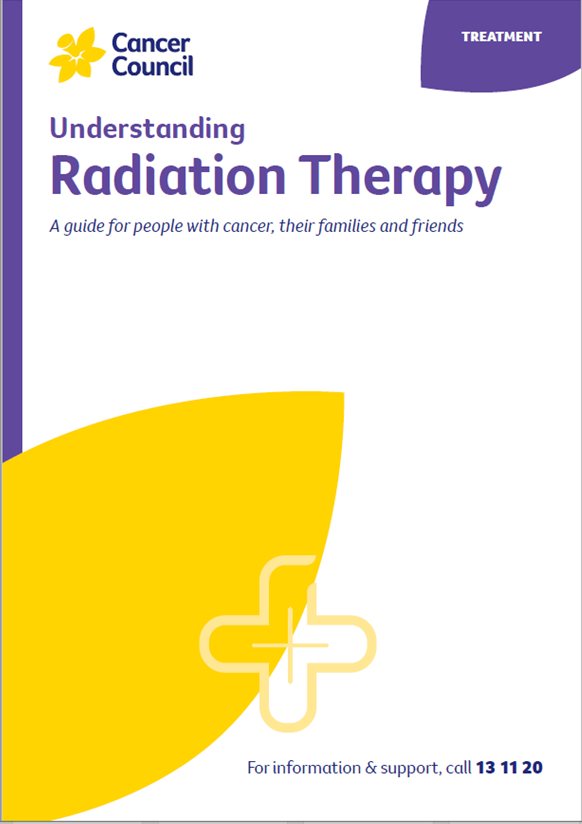- Home
- Cancer Information
- Cancer treatment
- Radiation therapy
- External beam radiation therapy (EBRT)
- Common types of EBRT
Common types of EBRT
External beam radiation therapy (EBRT) can be given using different techniques and types of radiation. The radiation oncologist will recommend the most suitable method for you. If you need a type of radiation therapy that is not available at your local hospital, they may arrange for you to have it at another centre.
Learn more about these types of EBRT:
- Three-dimensional conformal radiation therapy (3DCRT)
- Intensity-modulated radiation therapy (IMRT)
- Volumetric modulated arc radiation therapy (VMAT) or Rapid Arc
- Image-guided radiation therapy (IGRT)
- Stereotactic radiosurgery (SRS) and stereotactic radiation therapy (SRT)
- Stereotactic body radiation therapy (SBRT)
Three-dimensional conformal radiation therapy (3DCRT)
| What is it | Most common type of EBRT |
| When used | Used to treat many different types of cancer |
| How it works | The radiation beam is shaped (conformed) to fit the treatment area; this means that the tumour receives most of the radiation, and healthy tissues receive much less |
| Machine type | LINAC |
| How often | Usually once a day, Monday to Friday |
Intensity-modulated radiation therapy (IMRT)
| What is it | Highly accurate type of conformal radiation therapy |
| When used | Used for most types of cancer, especially for curative treatment |
| How it works | Shapes and divides multiple beams of radiation into tiny beams (beamlets) to closely fit the tumour while healthy tissue nearby receives lower doses of radiation therapy |
| Machine type | LINAC |
| How often | Once a day, Monday to Friday |
Volumetric modulated arc radiation therapy (VMAT) or Rapid Arc
| What is it | Type of IMRT |
| When used | Used for many types of cancer, especially if near sensitive body organs |
| How it works | Machine moves around you and reshapes and changes the intensity of the radiation beam to the tumour |
| Machine type | LINAC |
| How often | Once a day, Monday to Friday |
Image-guided radiation therapy (IGRT)
| What is it | Uses x-rays or CT scans at the start of each session to check that you are in the correct position for treatment |
| When used | May be recommended for cancer in areas that are likely to move a lot, such as the lungs from breathing |
| How it works | Repeated imaging allows for your position or radiation dose to be adjusted during treatment; this helps protect normal tissue |
| Machine type | LINAC or MR-LINAC (combines MRI with LINAC) |
| How often | Once a day, Monday to Friday |
Stereotactic radiosurgery (SRS) and stereotactic radiation therapy (SRT)
| What is it | Specialised type of radiation therapy; SRS is not surgery and does not involve any surgical cuts |
| When used | Used for brain tumours |
| How it works | Many small beams of radiation are aimed at the tumour from different directions to target the exact shape of the tumour |
| Machine type | LINAC but may use a CyberKnife or Gamma Knife machine |
| How often | Can vary, usually given in one dose |
Stereotactic body radiation therapy (SBRT) or stereotactic ablative body radiation therapy (SABR)
| What is it | Delivers tightly focused beams of high-dose radiation precisely onto the tumour from many different angles |
| When used | May be used to treat small cancers in the body, including small lung or liver cancers or small metastases (cancer that has spread away from the primary cancer) |
| How it works | Combines many small beams of radiation from different angles to target the exact shape of the tumour |
| Machine type | LINAC or Gamma Knife machine |
| How often | Up to five doses, given once a day |
Podcast: Making Treatment Decisions
Listen now
More resources
Prof June Corry, Radiation Oncologist, GenesisCare, St Vincent’s Hospital, VIC; Prof Bryan Burmeister, Senior Radiation Oncologist, GenesisCare Fraser Coast, Hervey Bay Hospital, and The University of Queensland, QLD; Sandra Donaldson, 13 11 20 Consultant, Cancer Council WA; Jane Freeman, Accredited Practising Dietitian (Cancer specialist), Canutrition, NSW; Sinead Hanley, Consumer; David Jolly, Senior Medical Physicist, Icon Cancer Centre Richmond, VIC; Christine Kitto, Consumer; A/Prof Grace Kong, Nuclear Medicine Physician, Peter MacCallum Cancer Centre, VIC; A/Prof Sasha Senthi, Radiation Oncologist, The Alfred Hospital and Monash University, VIC; John Spurr, Consumer; Chris Twyford, Clinical Nurse Consultant, Radiation Oncology, Cancer Rapid Assessment Unit and Outpatients, Canberra Hospital, ACT; Gabrielle Vigar, Nurse Unit Manager, Radiation Oncology/Cancer Outpatients, Cancer Program, Royal Adelaide Hospital, SA.
View the Cancer Council NSW editorial policy.
View all publications or call 13 11 20 for free printed copies.
Need to talk?
Support services
Coping with cancer?
Ask a health professional or someone who’s been there, or find a support group or forum
Looking for transport, accommodation or home help?
Practical advice and support during and after treatment
Cancer information
Making cancer treatment decisions
Decision-making steps, consent and second opinions
Deciding on specialist care
How to find and choose a surgeon, oncologist or other specialist

